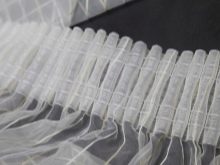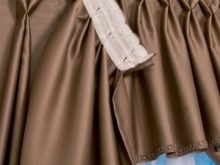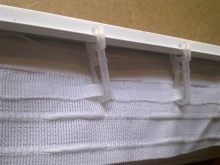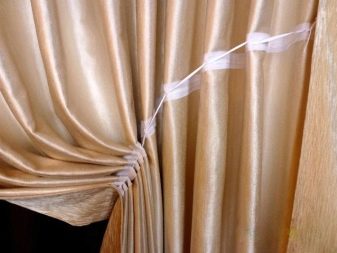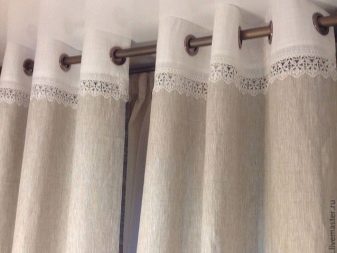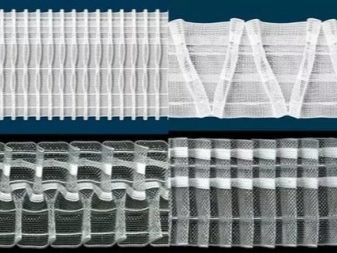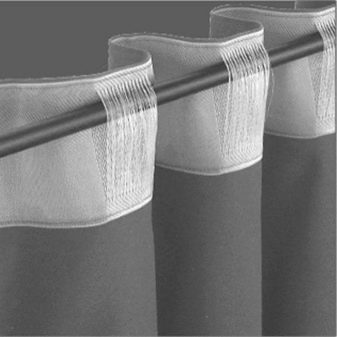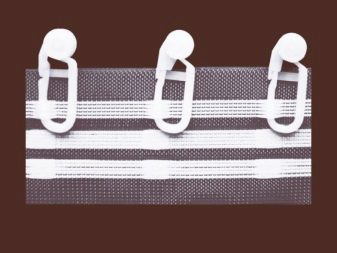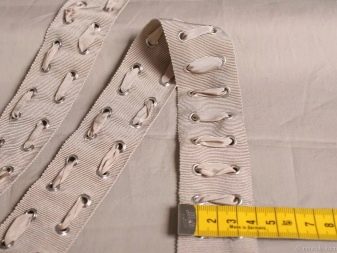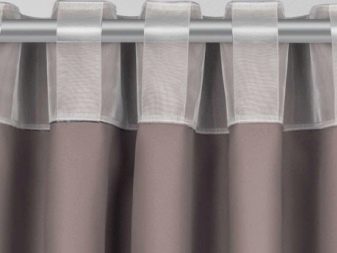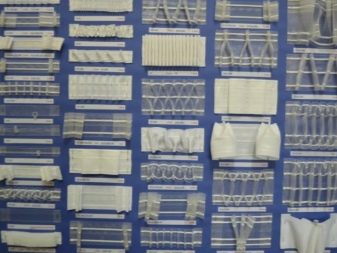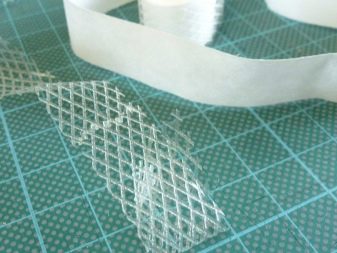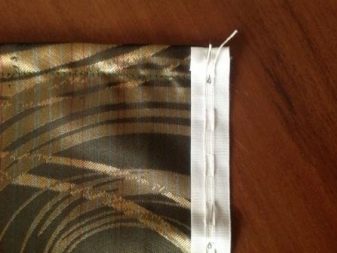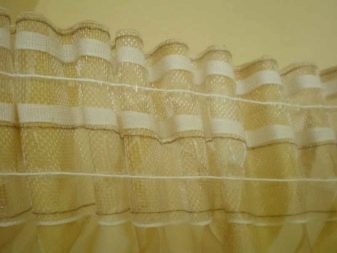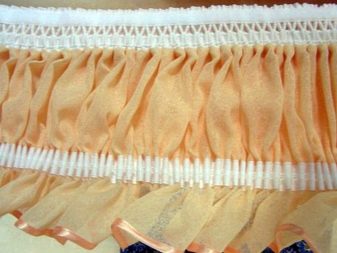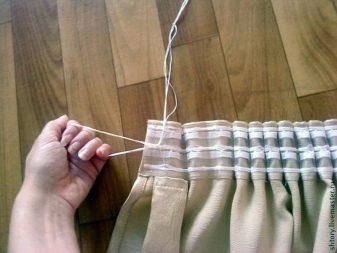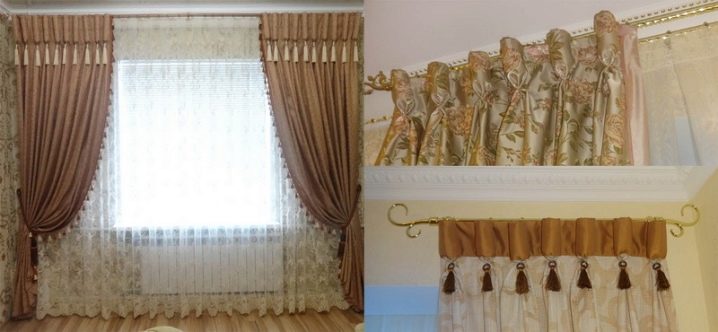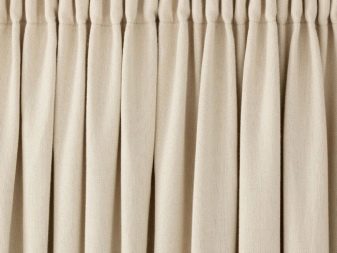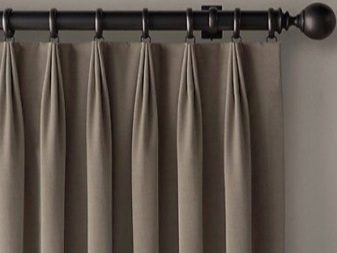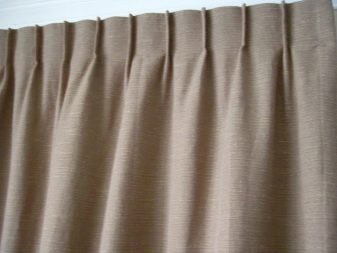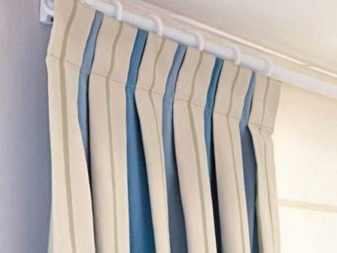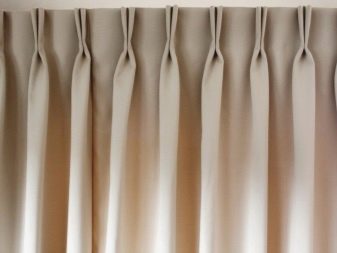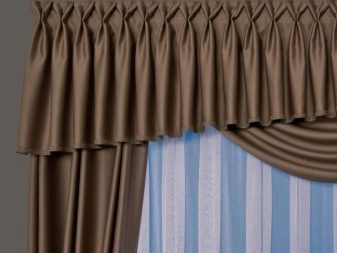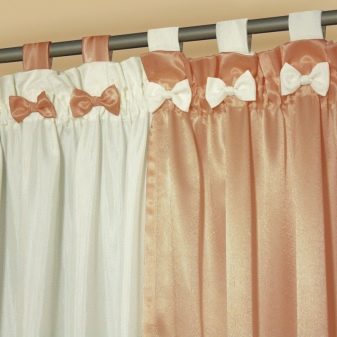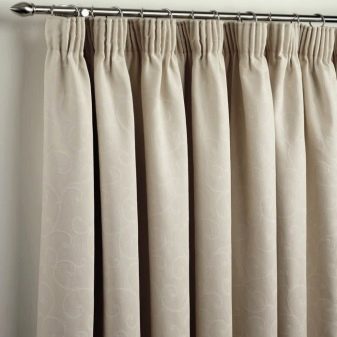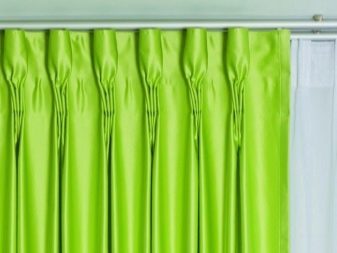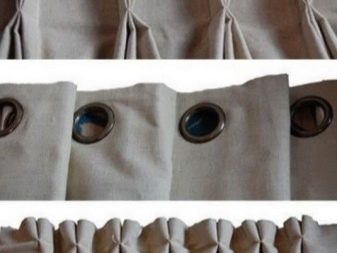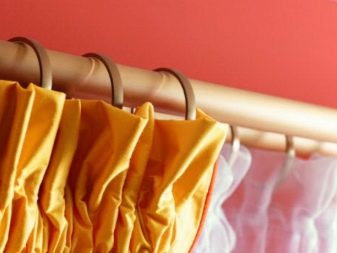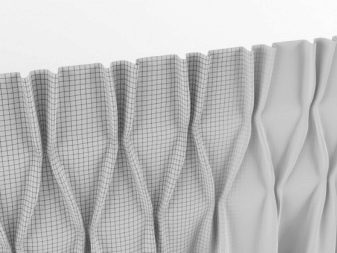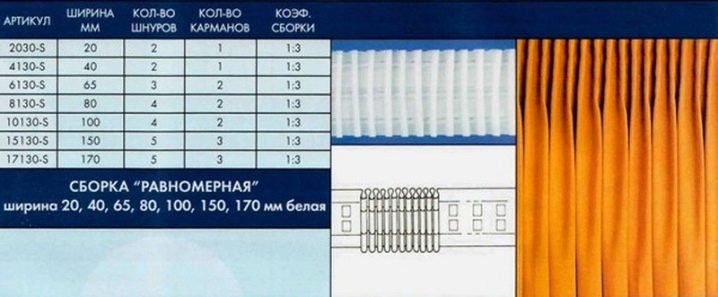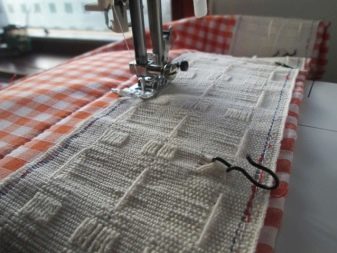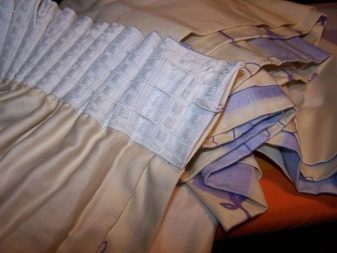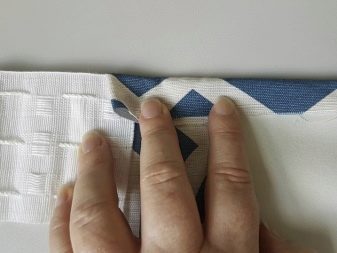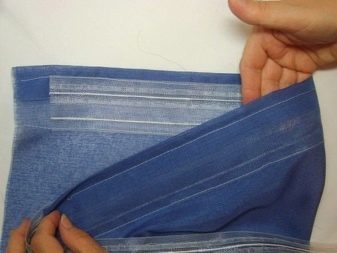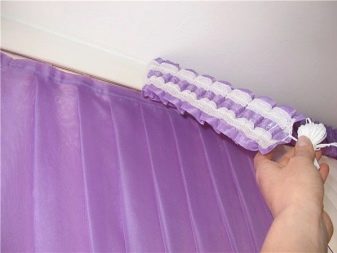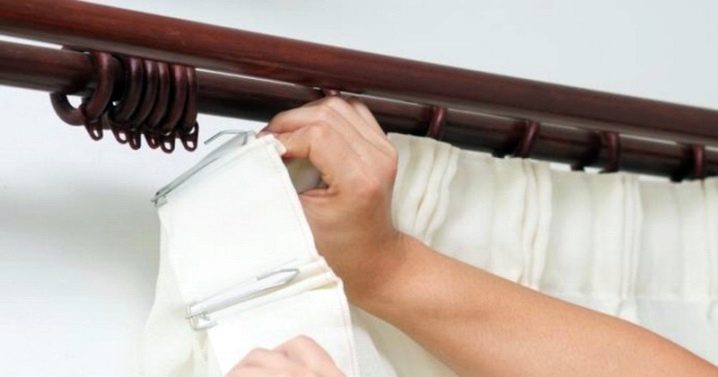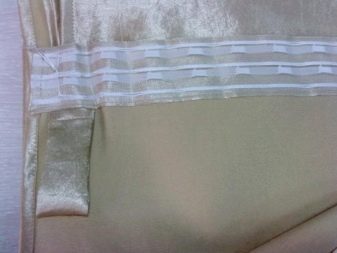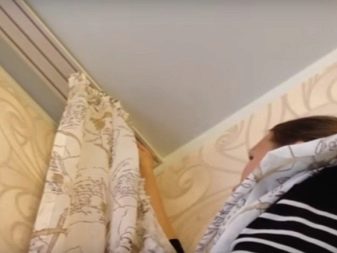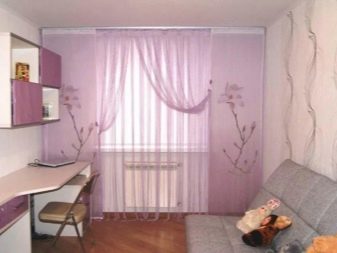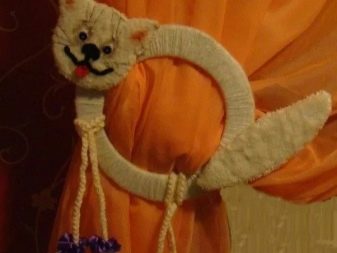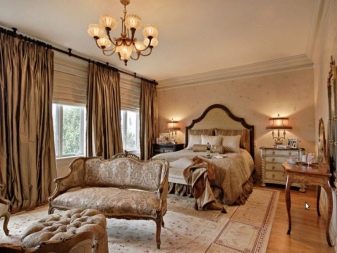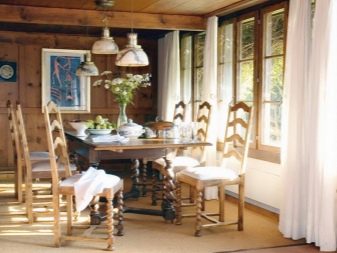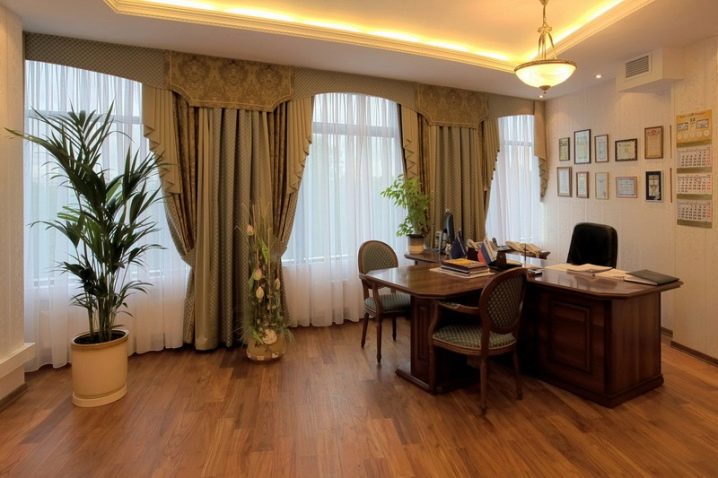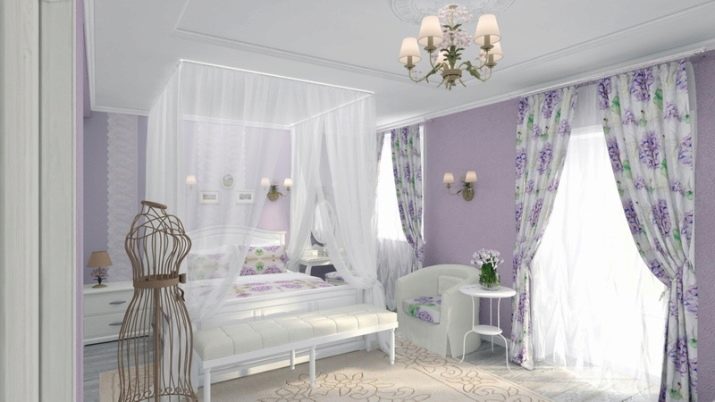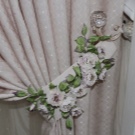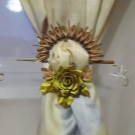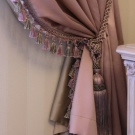Curtain tapes: types and their application
The dream of every hostess is to make your apartment comfortable, and the interior is beautiful and original. And it depends not only on modern furniture, its arrangement and combination, but also to a large extent on stylishly decorated windows. An important role in this is played by curtains, which occupies a large window space and is breathtaking and the walls. Not only the beauty of the fabric of curtains, but also how they fall down, forming soft even folds, solves a lot.
What it is?
There are many accessories that help to quickly and effortlessly hang curtains on the window, and at the same time give them original and elegant assemblies. Such an important detail is the curtain tape. It represents fabric strips of different widths, along the entire length of which thin ropes or laces are stretched in one or several parallel rows.In the middle of the ribbon there is a denser layer with loops designed to hang the curtains to the baguette, and the ropes are used to create assemblies of the desired shape and size.
Both natural and synthetic fabrics of different density can serve as a material for curtain tape. Made of rigid fabric tape retains its shape very well.
The use of braid for curtains:
- processing the upper edge of curtains or tulle;
- hanging them to the eaves without the help of metal pegs;
- Receiving assemblies of various configurations.
In addition, it can be sewn in another place on the curtains. After the laces on the surface of the curtains folds are formed, they can give the desired shape. And to remove the curtains, you just need to untie the laces and straighten the ribbon. Curtain tape much easier action on the design of the window, especially since it is easy to sew it yourself. With the help of curtain ribbons you can create a variety of patterns on the curtain or tulle canvas using soft draperies.
The value of the curtain tape also lies in the fact that it is not necessary to sew the loops manually, and this greatly facilitates the sewing of curtains, the process of assembling the assemblies takes place quickly, thus forming even and desired folds. At the same time, a fabric of any density drapes beautifully.With the help of ribbons, you can change the length of the curtains without cutting them, securing the hooks on another row (higher or lower).
Kinds
The variety of curtain tapes is large, there are about 70 types. They differ:
- the shape of the folds;
- fasteners;
- manufacturing material;
- size (width).
Tapes can be transparent and opaque. The material for them can be:
- fishing line - a ribbon made of fishing line is used for draping light tulle, as well as organza and veils (such transparent tape is not visible through light fabrics);
- cotton, polyester, sometimes even paper — such tapes are used for heavy fabrics.
By fastening method are:
- braid with fastening loops for hooks;
- band with grommets;
- a tape combining hook and velcro loops for fixing onto the fabric;
- braid for cornice-strings;
- curtain tape for pipe eaves.
Band with fastening loops for hooks can have not one, but several rows with loops. Simple pleats are formed using ribbons with two rows of loops, and ribbons with 3 or 4 rows are used to create a decorative curtain top. According to the method of attaching to the curtain curtain, the curtain tape is attached and sticky. Adhesive tape is a strip with a layer of hot melt adhesive.It happens with one layer of glue located on one side of the webbing and double-layer - with hot glue on both sides. On the fabric of curtains fixed processing with iron. The fabric at the same time acquires some rigidity.
The width of the tape is also different. The standard tape is from 1.5 to 10 cm. The most popular tape is 2.5 and 6 cm.
A tape of 1.5-4 cm is considered to be narrow. It is necessary with a covered eaves, when the hooks are covered with a special decorative rail, if the top of the curtain rests against the ceiling, the eaves are located in a niche or the lambrequin covers the top of the curtain. A narrow ribbon is also used for short curtains of lightweight fabrics.
The wide ribbon is 5-17 cm, it is used for draping on a non-standard or unclosed cornice and is necessary with a small number of hooks for fastening. It holds well the top of the fabric, not allowing sagging. With its help, you can form folds of different types. It is indispensable for curtains of dense fabrics for the formation of decorative folds in large quantities and forms a special beautiful drape on the upper edge.
According to the formation of various types of assemblies curtain tape is:
- forming horizontal folds - used for traditional curtains, lambrequins, as well as for Italian curtains;
- forming vertical folds - this type of tape is used in Italian and French windows with lifting mechanisms.
There are also such types of ribbons as a column forming 1 to 2 assemblies, and an Austrian ribbon forming various patterns and forming folds in “puffs”, “butterflies”, and “glasses”.
Types of folds
As there are many types of curtain tapes, there are also many variants of decorative types of folds. Tulle and curtains, gathered in a certain way with the help of folds, give the interior a special look. Their types can be from the simplest, in which the curtains are lowered soft assemblies, to the most intricate.
The types of folds on the curtains:
- "Harmonic" - the simplest type of assembly for light tulle and curtain fabrics, which is achieved using a wide curtain tape with an assembly factor of 1.5. Parallel narrow folds are formed, and a string and a narrow crossbar are best suited as a cornice.
- Traditional "Pencil" folds also simple and convenient to use,besides, hang such curtains can be very quickly. The assembly factor for this type is 2.5, and the folds are narrow. The tape should be 7.5 cm wide.
- Unilateral foldsin which the cloth of the fabric is wrapped in one direction in smooth waves.
- Folds counter - for their formation is determined by the pair of number of folds, pawed towards each other.
- "Butterfly", or pufovye folds, having the appearance of lush rhombuses. Only a tape with four rows stitched along allows to form a “butterfly”.
- French fan assemblies, consisting of three folds and two pockets, which depth is 14 cm.
- Voluminous assembly glasses formed by braid with 4 ropes.
- Counter assembly or "tapestry" has two taps overlapping each other. It is achieved by using a ribbon with three rows of laces stitched along it.
- "Sleeve" - round-shaped folds, formed on curtains and drapes with the help of a wide braid. The build factor is 2.
- "Bows" consist of flat folds, turned in opposite directions, forming a bow.
- "Tulip" it is formed when the bottom of the ribbon is clamped, with the result that in the upper part a volumetric shape similar to a tulip is obtained.To preserve the shape inside put any filler.
- French assembly consists of several folds, tightening in the middle of the X-shaped.
- "Chicken legs" - several folds, collected in one point at the bottom of the ribbon and diverging in different directions and upwards.
There are also types of assemblies in the form of a zigzag, tubule, as well as a "triple". Each type of curtain tape has its own assembly factor. This is the ratio of the initial width of the curtain or tulle to the width of the folds, and usually it is 1.5; 2; 2.5 and 3. The coefficient is often indicated on the packaging of the curtain tape.
How to sew to tulle?
First of all, you need to correctly calculate the length of the tulle and curtain tape. It is determined by multiplying the length of the eaves by the coefficient of the assembly of tulle plus 15-25 cm for shrinkage and turns. With a factor of 2, two meters will go to the folds from the initial width of the fabric web of 4 meters. For tulle suitable thin polyester curtain tape. When working with tulle, you should avoid making unnecessary punctures with needles, since it is very easy to deform light fabric.
The method of sewing wide and narrow braid is somewhat different. A wide ribbon is sewn as follows:
- Tulle is processed on the sides and bottom. When using loose organza and veils, in addition, you need to sweep them on the overlock or process them, stepping back a little from the hem, pull three threads out of the fabric, and then cut them in a straight line.
- Tulle on top of bending on the wrong side to the width of the curtain tape and ironed iron.
- The curtain tape is superimposed on this gateway, departing from the top fold 5-15 mm. The more complex the folds, the greater the distance from the edge. But in no case should the braid protrude over the hem of tulle.
- The tape should not extend about 1.5 cm to the side edges of the tulle.
- The band is fixed with pins in several places or it is tipped over from above and below to the tulle.
- The tape is attached on a typewriter. The number of lines corresponds to the number of rows of ropes on the braid, sometimes even more if, for example, the braid's width is more than 6 cm. When stitching, the tulle with the braid is slightly stretched to prevent wrinkles. To the tulle was not puffs, you need to scribble in the same direction.
- Then processed side edges. Tulle twists twice, grabbing the braid at the second turn, the strings are released, and then the tulle is stitched.We can not allow that when sewing stitches fall under the line.
- Basting threads or pins are removed.
Narrow curtain tape sewn so:
- side edges and bottom of tulle are processed with overlock or on a typewriter;
- bend the upper edge of the tulle inside out a centimeter by 2 and tack;
- the curtain tape is fixed with pins, departing 5 mm from the upper edge of the tulle;
- then it is sewn on a typewriter or manually on top and bottom, after which the pins are removed.
It must be remembered that the loop on the tape must be on the outside, otherwise there will be nothing to attach hooks or rings.
How to collect and hang?
Before proceeding to the formation of folds, tulle or curtain should be carefully ironed iron. Step-by-step instructions for the formation of the simplest folds-assemblies on tulle or curtains:
- First, calculate the footage of the fabric necessary for the formation of folds, determining their density.
- On the one hand, the curtains need to tie up the ropes at the base of the sewn tape so that they do not come out when tightening. To do this, they pull out of the tape, departing from the edge of a few centimeters.
- This side of the curtain is attached, for example, to the door handle.So the fabric will be easier and will help avoid sagging.
- Then you need to gradually pull the fabric, moving it to the fixed side, equally spreading the folds over the entire length of the curtain.
- When forming the assemblies, the released strings-cords are coiled so that they do not interfere.
- Shrinking and uniform distribution of the folds occurs until the curtain width matches the length of the eaves.
- The finished pattern and density of the finished curtain are monitored.
- Having obtained the desired result, the released ropes are also fixed at the base of the tape. Experienced housewives sew small pockets from the inside out, where cords and cords are hidden.
- The loops of the curtain tape are hooked onto the hooks with a gap of 8-12 cm, after which the curtain can be hung on the eaves.
In no case can not hook the hooks over the cords, as pulling, they will create sagging curtains. Fastening hooks or other fixing parts are attached only to the pockets on the tape.
There is another way to form wrinkles with the help of hooks:
- Stepping back from the side edge of the tulle (curtain) by 10 cm, an extreme first hook is attached to the loop.
- The side edge of the tulle tucks on the first hook, and the second hook clings to two loops - the next and the opposite from it. The result was a so-called technical support.
- The third hook also clings to two loops - next to the gate and a loop through a gap of 5 cm. Thus a small fold was formed.
- Further, the process of the formation of folds is similar: 10 cm between the hooks and 5 centimeters between the eyelets on the hook.
- On the opposite side of the curtain is another technical turn.
As a result, small folds formed on the canvas, and tulle can be hung on the eaves.
Beautiful examples in the interior
Selection of curtains followed by window decoration is the final touch in creating the harmony of the apartment interior. In the interior design and selection of types of curtains, professional designers prefer concise styles such as minimalism or high-tech. Although weightless and air-filled styles, shebbi-chic and Provence are very popular.
Color drawings, lightness and blurry shades are characteristic features of the chebbi-chic style. The original way to decorate tulle is to use floral decoration - flowers made of nylon ribbons, decorated with beads or beads and sewn on the bottom of tulle.
For Provence, airiness of fabrics, floral or striped and checkered patterns are also permissible. For example, white cotton curtains decorated with cross-stitch or satin stitch will harmoniously fit in the kitchen. Patterns of small flowers, butterflies or birds are preferred. Bright checkered ruffles or frills, bows, fixed from above near the eaves, will serve as the decoration of white curtains. Modern blinds and Roman curtains will look much more beautiful and original if they are decorated with colorful bows 8-10 cm wide.
Cotton curtains will look great to the children's room. Ordinary curtains can be tied up with the help of soft toys, for this purpose they sew a button and make a loop. Favorite toys, gently covering the curtain, slightly open the window.
Tiebacks for curtains can be made with your own hands from any dense material: cardboard, plastic. Cut out the ring of the desired (desired) diameter. Then it needs to be wrapped with ribbons (kapron, satin) or some kind of cloth, decorated with bows with flowers, small soft toys. To secure the pick-up ring on the curtain, Japanese sticks are used, which are also decorated.
Brooches in the form of decorative butterflies, flowers can also serve as a decor for curtains in the nursery.
The curtains, which are fixed on the eaves with fabric loops and decorated with large buttons for decoration, have a stylish and harmonious look. A beautiful light fabric matched to the tone serves as decoration, if it is hung from above, giving it the appearance of garlands of different sizes.
Types of curtains vary in accordance with the style of the interior:
- Classic, baroque and rococo. For these areas are selected expensive thick printed fabric - silk, velvet with golden and silver threads, which are then decorated with cords and tassels.
- Rustic. For this style they use cloths from natural fabrics, the color range of which is closer to the natural shades. Curtains should be simple cut and decorated with lace canvas, ruffles, embroidery, ruffles.
- Provence. It is characterized by fabrics from cotton of dairy and cream shades, with a floral or checkered decor. Embroidery, ruffles and tacks are used as additional decorations.
- Minimalism. The main feature of this style is plain, striped or with a geometric pattern of fabric.Curtains are distinguished by their simplicity and no decorative elements are used.
The traditional style for offices and offices is achieved by “pencil” folds of curtains or tulle. In the interior with rich and elegant furniture, the curtains with the “fan” assembly will emphasize its sophistication. Halls, vast rooms, rest rooms will wonderfully complement curtains and tulle to the floor with a “glass” or “wine-glass” assembly. Children's rooms, the kitchen will be decorated with tulle with the assembly "puffs" or "butterfly". The bedroom interior will be complemented romantically with curtains, assembled in a bow.
Decorative addition to curtains directly depends on the style of the interior. In the living room and bedroom classic curtains made of thick fabrics are possible, as well as double curtains with decorative elements of the type of swag (garland) and jabot (tie). Tiebacks for curtains are also an important decorative detail. It can be:
- grapples made of various fabrics;
- tassel cords;
- brooches, hairpins;
- beads of different sizes.
Curtains can be combined and combine fabrics of different colors, suitable for the tone. Such curtains will make the interior in the style of minimalism more beautiful, for example, using a monochromatic fabric and checkered in a 4x1 ratio.
Nowadays, solid, dense fabrics made from natural materials (linen, cotton, bamboo, silk) are fashionable, and the natural style, which is characterized by color gamuts of blue, gray, green, and nut colors, is popular.
To learn how to hang curtains on a curtain tape, see the following video.


